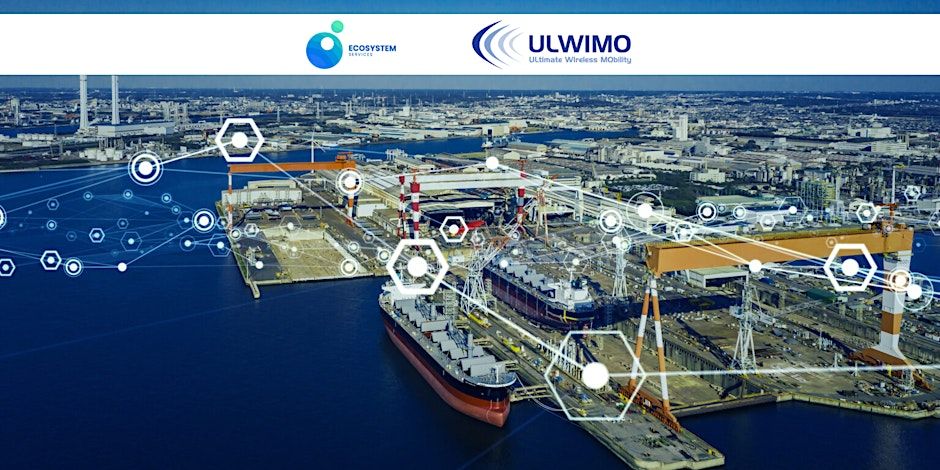Introduction
On March 26 we organised the 2nd round table of which the first one was in December at Schiphol. The subject of both sessions is to work towards market acceleration of private networks at main ports (airports and seaports). The name ‘main ports’ is not widespread yet. Mainports to us are both airports and seaports due to their commonalities. To combine them with the name ‘main ports’ makes sense on the basis of the common logistical/transport hub they both represent and the Netherlands has with Port of Rotterdam and Schiphol two major ports playing a major role in Europe. We observe many commonalities in geographies (large areas), business case, operations demands and technical challenges.
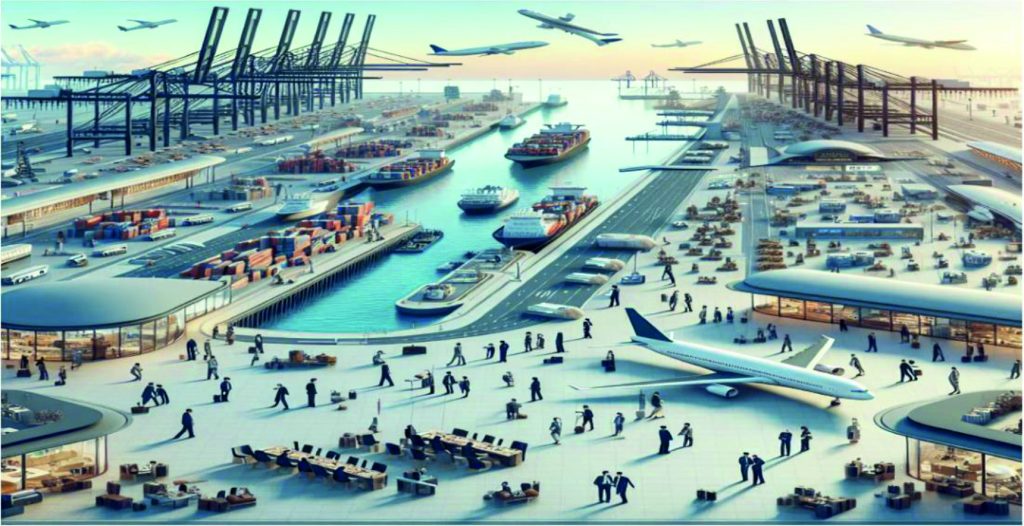
After the introduction of almost 40 participants representing the ecosystem: end users, system integrators, suppliers, consultants and government, Koen of UlWiMo presented a recap of the meeting of December. The main items addressed were:
• market developments on basis of data of GSA, where main ports is high on the list,
• an overview of the known 20+ European projects at both airports and seaports
• An initial overview of the value/supply chain of private network solutions
• An overview of the different possible roles of the port authority
• The issue of the ‘landlord’/multitenant solution. Mark – Ecosystem Services – recapped the result of the first ecosystem round table meeting of December 10, having discussions with all of the actors and stakeholders in the system, focussing on shared objectives in working together generating solution stacks for shared use cases. Common needs are knowledge sharing, bringing together expertise and capabilities, and sharing best practices experiences where all can learn from each other.
Anke – Ecosystem Services – introduced PRIMMA as name of the planned programme PRivate networks Initiative for Main ports Market Acceleration.
Reflections from last workshop by Lstelcom
The morning ended with an excellent presentation from LS telcom Saul Friedner on the
• spectrum situation in Europe on private networks
• The status of the landlord/multi-tenant issue
Inspiration and breakouts session part 1
The afternoon session started with an inspiration session of David O’byrne of Druid on their knowledge, experiences and use cases, followed by the presentation of Port of Valencia (4th port of Europe and the biggest one in the Mediterranean) that has built an impressive private network for innovation purposes. They already developed a 4G network and is now tendering a 5G network for its port, the industries and the university campus.
Use cases
The session was concluded by Gordon Hewitt of NTT Data on the view of use cases. An actual list of use case requirements was used from an airport tender. The discussion covered amongst others the construing of individual use cases – of which there are 100+ – out of larger building blocks like computer vision and real-time data. It’s not just about the use cases itself, but more about analyzing the value they generate. This is considered from various aspects, as it contributes to securing elements such as a business case and prioritization.
Supply chain, roles and responsibilities
The next session was started by Bob Dodemont of Port of Rotterdam (PoR) by giving an overview of the plans and challenges, The port of Rotterdam is the largest port of Europe. PoR presented the many challenges a port authority faces when developing a 5G service in a port, eg. the usable capacity for private networks for 5G is limited in the port within the 3.5 GHz spectrum.
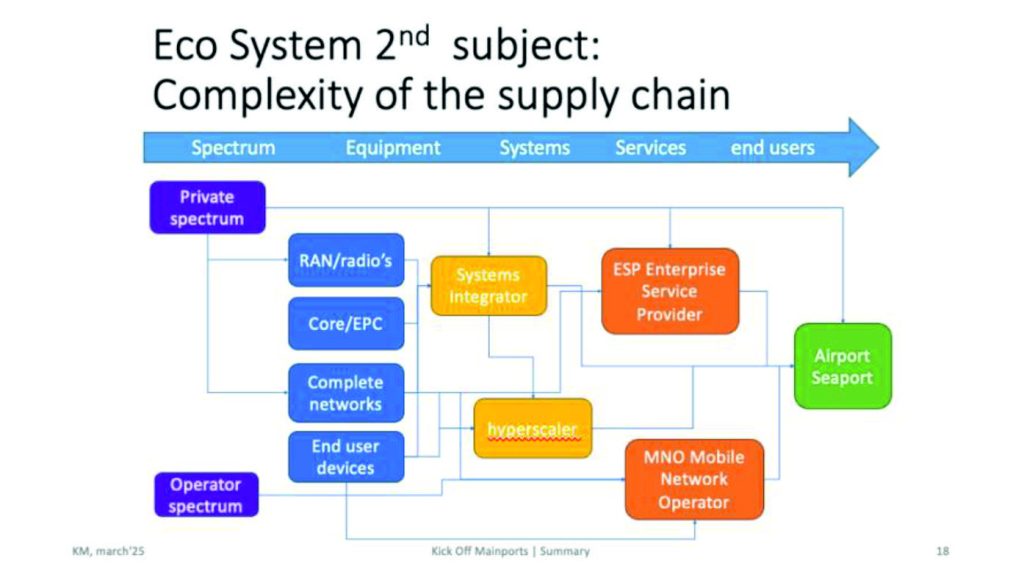
Koen presented an overview of the supply chain and the various roles of the port authorities ranging from a modest role (local tenants have their own networks) to a more profound role (operator). Within the group there is a growing desire to create a similar ecosystem organisation for transport hubs (aka main ports) to that in sectors like 5G Alliance for Connected Industries and Automation (5G-ACIA) for industry/manufacturing. There are some specific characteristics for this sector main ports:
• Truly gigantic sites
• Port and airport authorities are essentially landlords. Rotterdam’s port has 3000 tenants, many of which want their own independent wireless systems
• link to logistics sector means a given asset (eg a plane or container) may visit multiple sites / networks even at the same port.
• part of national critical infrastructure, which means use cases & integration with safety & security agencies
• unique radio (& backhaul) obstacles such as moving metal ships and aircraft, large bodies of water or open concrete ramp areas etc
• lots of other wireless / radio systems on site, including satellite services, specialist aviation / maritime systems, radar etc There are complex relationships with MNOs and a strong desire for dedicated networks, given the costs of downtime & limited SLAs available.
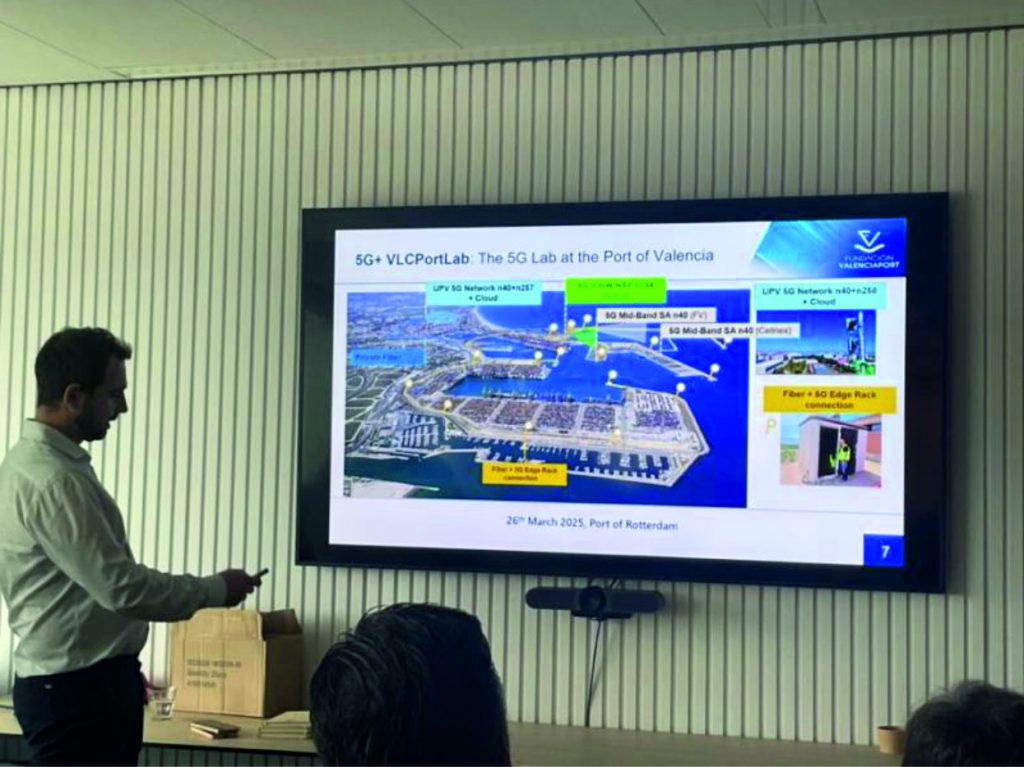
First break-out: the supply chain and roles.
The groups worked on possible ways to develop templates for rolling-out network and preconfigured supply chain models. One thing that was noted was that there are usually just one or two use-cases in operation, and that determines the current state of the network (warehouse ‘syndrome’ where the (simplified) solution for a warehouse might be influencing the overall solution). It was suspected the network management tasks will get more complex as the applications “stack” and there will be more need for QoS management, APIs and maybe some sort of slicing. The typical supply chain was counted by the process from the perspective of the end user: list requirements -> design of the network -> build -> maintain Due to the different world of use cases defined by end users and the technical world of the solutions, it was suggested to introduce the man in the middle: that understands the use cases in terms of technical requirements and capabilities of the solution and the other way around.
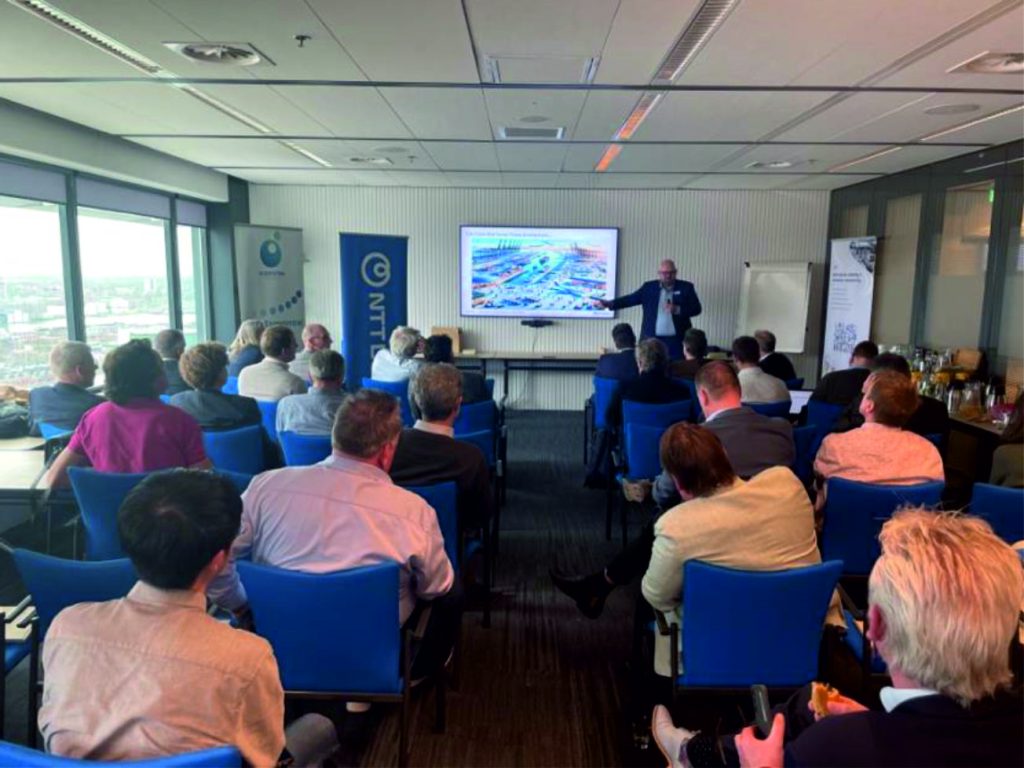
Second breakout: PRIMMA programme session
The second breakout session focused on discussing and brainstorming potential objectives and challenges to work on when collaborating as a group over the course of a year. What would you like to establish in terms of results and deliverables when working as a group together for a year.
The results of this session will be incorporated into a proposal for all participants, aiming to establish a level-playing-field working group to actively work together in achieving these objectives and targeted deliverables. One of the notable challenges was to be as complete as possible in the ecosystem stakeholders and actors and involve more end user participation. All groups showed great energy and engagement.
A big thanks to Port of Rotterdam, all speakers and participants for making this a very successful and pleasant experience.
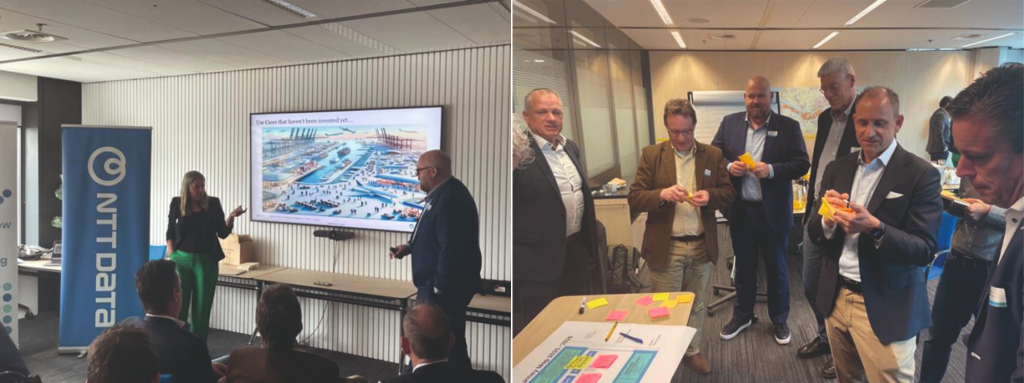
Contact:
Koen Mioulet – Ulwimo
koen@ulwimo.com
Mark Beermann – Ecosystem Services
mark@ecosystemservices.nl

